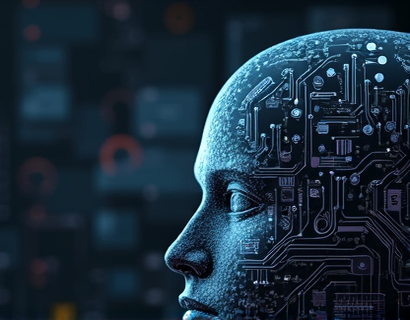AI-Powered Chat Interface: A Safe and Educational Gateway to Specialized Social Services Information
In the digital age, accessing information has become more convenient than ever, thanks to advancements in artificial intelligence and chat technology. An AI-powered chat interface has emerged as a revolutionary tool, providing users with a safe and educational gateway to specialized social services information. This platform is designed to cater to a diverse audience, including adults, students, and young learners, ensuring that everyone can benefit from verified and tailored content.
The primary goal of this AI-driven chat platform is to deliver accurate and reliable information about social services, empowering users to make informed decisions and engage effectively with essential resources. By leveraging the capabilities of artificial intelligence, the platform can provide real-time, context-aware responses to a wide range of queries related to social services, thereby bridging the gap between users and the services they need.
Ensuring Safety and Trust
One of the most significant advantages of using an AI-powered chat interface for social services information is the emphasis on safety and trust. The platform employs rigorous content verification processes to ensure that all information provided is accurate, up-to-date, and sourced from credible organizations. This commitment to accuracy helps build user confidence and ensures that individuals, regardless of their background or level of expertise, can rely on the information they receive.
Moreover, the chat interface is designed with user safety in mind. It includes features to filter out inappropriate content and ensure that interactions remain respectful and helpful. For young users and students, a child-friendly version of the chat interface is available, which not only simplifies the language but also provides age-appropriate content, making the platform accessible and safe for all age groups.
Specialized and Tailored Content
The AI chat platform offers specialized content that is tailored to the specific needs and contexts of its users. Whether an individual is seeking information on healthcare services, educational programs, housing assistance, or mental health resources, the platform can provide detailed and relevant information. The AI engine is trained on a vast dataset of social services data, allowing it to understand the nuances and complexities of different service areas and deliver targeted responses.
For adults, the platform can provide in-depth information on topics such as disability benefits, legal aid, and employment services. For students and young learners, the content is simplified and focused on educational support, child welfare services, and youth programs. This tailored approach ensures that users receive information that is not only accurate but also directly applicable to their situation.
Educational Value and Informed Decision-Making
The educational value of the AI-powered chat interface cannot be overstated. By providing comprehensive and easy-to-understand information, the platform helps users gain a deeper understanding of the social services available to them. This knowledge is crucial for informed decision-making, especially in areas where choices can significantly impact one's life, such as healthcare, education, and housing.
For example, a user seeking information on child adoption can receive detailed explanations of the adoption process, legal requirements, and available support services. This level of detail empowers individuals to make well-informed decisions, reducing the likelihood of misunderstandings or mistakes. Similarly, students researching scholarship opportunities can get comprehensive information on eligibility criteria, application processes, and deadlines, helping them navigate the often complex world of financial aid.
Interactive and Engaging Experience
The AI chat interface is designed to be interactive and engaging, making the process of seeking information both efficient and enjoyable. Users can engage in natural language conversations, asking questions and receiving responses in a conversational tone. This human-like interaction makes the platform more approachable and user-friendly, encouraging individuals to explore and utilize the available resources.
Additionally, the platform can offer personalized recommendations based on the user's previous interactions and preferences. For instance, if a user frequently asks about mental health services, the chat can proactively suggest relevant resources or upcoming webinars on mental health topics. This personalized approach enhances the user experience and increases the likelihood of users finding the information they need.
Support for Diverse User Needs
The AI-powered chat interface is designed to support a wide range of user needs, making it a versatile tool for various demographics. For individuals with disabilities, the platform can provide information on accessible services and resources, ensuring that everyone has equal access to the support they require. For non-native speakers, the chat can offer translations and simplified explanations, breaking down language barriers and making the information more accessible.
Moreover, the platform can cater to users in different regions, providing location-specific information and resources. For example, a user in a rural area seeking information on local food assistance programs will receive details on nearby food banks and community centers, whereas a user in an urban area might get information on more specialized services such as after-school programs for children.
Building Community and Engagement
Beyond providing information, the AI chat interface serves as a platform for building community and fostering engagement. Users can connect with each other, share experiences, and support one another through forums and discussion groups. This community aspect is particularly beneficial for individuals who may feel isolated or unsure where to turn for help. By connecting with others who have faced similar challenges, users can gain valuable insights and emotional support.
The platform can also host virtual events and Q&A sessions with experts in various social service fields. These events provide opportunities for users to ask questions directly to professionals, gain deeper insights, and learn about the latest trends and best practices in social services. Such interactions not only enhance the educational value of the platform but also build a sense of community and trust among users.
Continuous Improvement and Adaptation
The AI-powered chat interface is not a static solution but a dynamic system that continuously learns and adapts to user needs and feedback. Through machine learning algorithms, the platform can analyze user interactions and refine its responses to better meet the evolving requirements of its audience. This continuous improvement ensures that the information provided remains relevant and up-to-date, reflecting the latest developments in the social services sector.
User feedback plays a crucial role in this process. The platform encourages users to provide feedback on the accuracy and usefulness of the information they receive, which is then used to train and improve the AI model. This user-centric approach ensures that the platform remains focused on delivering high-quality, user-friendly content.
Conclusion
The AI-powered chat interface represents a significant advancement in how individuals access and interact with social services information. By providing a safe, educational, and tailored experience, the platform empowers users to make informed decisions and engage effectively with essential resources. Whether for personal, educational, or professional purposes, this innovative tool is a valuable asset for anyone seeking information on social services. As technology continues to evolve, the potential for such platforms to transform the way we access and utilize social services is immense, promising a future where information is not only readily available but also easily understandable and actionable.











































